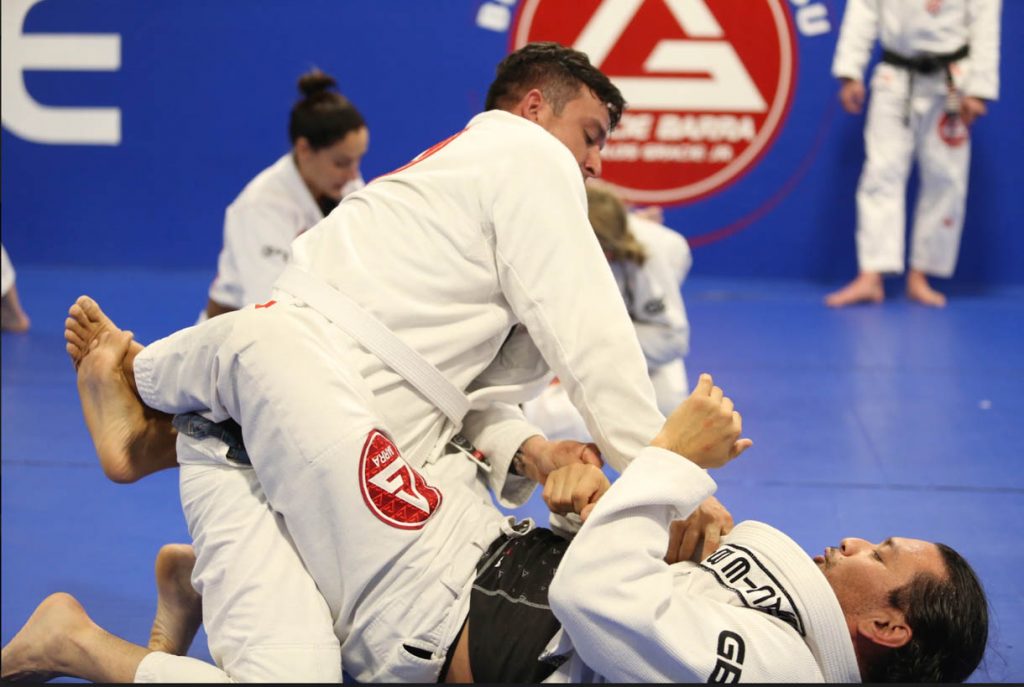Is Strength Important In Jiu-jitsu?

One of the pieces of advice that newer students in jiu-jitsu hear most often – particularly after a roll with a more experienced training partner – is: “You are using too much strength!”
So strength is not important in jiu-jitsu?
It is not so simple as that.
Think of the top competitors at the world level and many of the athletes are very strong indeed and perform serious strength and conditioning workouts as an essential part of their overall training. And if you have ever grappled with a physically powerful opponent, even one of much lower skill, you will know that strength and explosive power IS important in jiu-jitsu.
So why do we hear that “you are using too much strength” so often in the school?
Perhaps a more accurate way to explain the idea is: “You are not using your strength efficiently.” All combat sports do require physical strength and endurance. When skill and experience levels are equal, the physically stronger athlete has a definite advantage.
Physical strength additionally helps protect our joints against injury which might even be the most important benefit of being strong.
If you have been around the mats for a few years you will have no doubt witnessed a smaller, weaker higher belt dominate and submit a much larger, stronger opponent. The big muscles are a problem to deal with early in the match, but rolling with a lot of exertion, the muscles tend to fatigue fairly quickly leaving the strong guy exhausted well before the end of the round. It is difficult to do any of your jiu-jitsu techniques when you are that fatigued!
Technique CAN overcome strength. But that doesn’t mean strength is not important.
Another important idea to consider when thinking about the role of strength in jiu-jitsu is how well does that strategy work against an opponent who is stronger than you? Obviously contesting strength against a heavier, stronger opponent is doomed to fail. A technical solution is the answer – as opposed to more strength.
The concept of “Seiryoku zenyo” -a Japanese expression translated as “Maximum efficiency” is a useful way to understand the most effective use of physical strength in jiu-jitsu.
How do we use our strength most efficiently in jiu-jitsu? Here are a few ways you may be more efficient with your application of physical strength in jiu-jitsu.
1) Always look for a technical solution to the problem you are encountering in a roll. You can try to perform a Herculean bench press to try to escape from underneath top mount or side control…or you can execute one of the escape techniques that you know. The idea is that when performed correctly, the techniques of jiu-jitsu are based on leverage, not on brute force. That is how a smaller weaker and technically skilled practitioner may overcome the strength disadvantage against a larger opponent.
2) Try to relax. Yes, this is easier said than done – especially when you are trapped underneath side control and your opponent smells a submission coming! Do not tense every muscle and hold your breath. Find a defensively safe posture on bottom and save your strength for that big bridge and hip escape when the timing is right.
3) Use your leg strength and hip movement instead of trying to push away by bench pressing the opponent off of you or clutching your opponent in a death grip.
One of the most important principles in jiu-jitsu is to use the strength of your legs and hips (the strongest muscle complexes of the human body) against the smaller, comparatively weaker joints of your opponents body. Using your stronger muscles when applying a technique with correct timing is the peak of efficiency in jiu-jitsu.
Strength is not a bad thing in jiu-jitsu, but it must be used efficiently and not a substitute for a technical solution to the problem.
See also on Gracie Barra : Applying Principles To Your Jiu-jitsu
Credits: Mark Mullen
Gracie Barra Black belt based in Asia
FB: facebook.com/markmullenbjj
